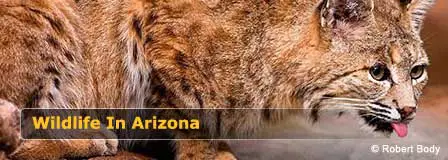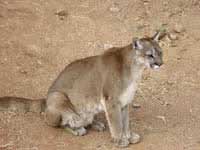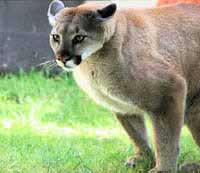Arizona Mountain Lion
 Mountain Lion. Creative Commons
Mountain Lion. Creative CommonsThe Mountain Lion is also known as a "cougar", "puma" and sometimes "panther". In North America, the Mountain Lion ranges east and west from the rockies to the Pacific coast and north and south from Canada through Mexico. They also cover Central and South America. The grace and power of the cougar continues to be a standard symbol of strength and stealth. Although it is considered part of the small cat family, the mountain lion is the fourth largest wild cat in the world after the tiger, lion and jaguar. Strange, but unlike cats of its ilk, a cougar cannot roar but similar to domestic cats, they do hiss, spit, growl, and even purr.
Hunting and Prey
Mountain lions only eat meat and will eat any animal it can catch. In Arizona, this includes deer, elk, antelope, bighorn sheep, wild horses and domestic cattle. The cougar is an ambush hunter preferring to stalk its prey. Its killing style is delivering a powerful leap to the back of the prey with a suffocating bite to the neck. It's interesting to note that other than humans, no animals preys upon the mountain lion.
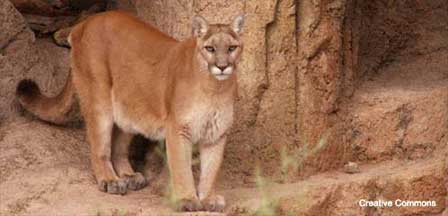
Habitat and Territory
The Arizona Mountain Lion has a wide and diverse habitat including high elevation forests, rimrock canyons and mountainous desert areas. It prefers dense underbrush and rocky areas which facilitates itd ambush method of stalking or lying and waiting for unsuspecting prey. The cougar is a solitary animal with adults only meeting during mating season. Mother cougars and her kittens live in groups. Sizes of territories vary depending upon the volume of prey and terrain. Mountain lions urinate in claimed territory to warn other lions. Male territories will overlap slightly with females but never with another male.
Characteristics and Behavior
Cougars are strong, sleek and agile. Adult males average 2.0 to 2.7 feet tall to the shoulders with a nose to tail length of about 8 feet. They generally weigh between 115 to 160 pounds. Females are slightly smaller.
Their primary coat color in "tawny", but can have reddish tones and light patches on its underbody. Kittens are born spotted with blue eyes and rings on their tails. With large paws and strong hind legs, mountain lions possess the ability for short powerful sprints. They can jump 18 feet vertically and up to 40 feet horizontally.
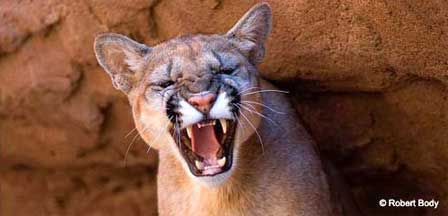
Urban areas are forever expanding in Arizona and the ranges of the Puma (mountain lion) sometimes overlap areas inhabited by people. Although attacks on humans are very rare, there have been accounts, particularly in California and British Columbia where attacks have resulted in human death. In history, there have been very, very few reports of pumas attacking people. Cougars do not recognize people as prey, but instances of attack are usually related to territorial conflicts or juveniles seeking their own territories after being separated from their mothers.
If you come across a mountain lion in the wild, do not corner or antagonize it. If you feel threatened, try and look menacing and larger than you actually are by maintaining intense eye contact, shout loudly but calmly and flare a jacket or sweater to make yourself look larger. Slowly back away, don't run in panic and do not play dead. If you find yourself being attacked, fight back with sticks, rocks and bare hands focusing on a cougars sensitive spots like its eyes. Since it is natural instinct for a mountain lion to inflict bites on the neck and vertebrae, try and position yourself to protect those areas of your body.
As a reminder, a cougar attack is extremely rare. Just avoid antagonizing the animal and do not corner them. Give them ample room to leave the area without being threatened. If you want to see them up close and personal, go to a zoo.
Arizona Animals

